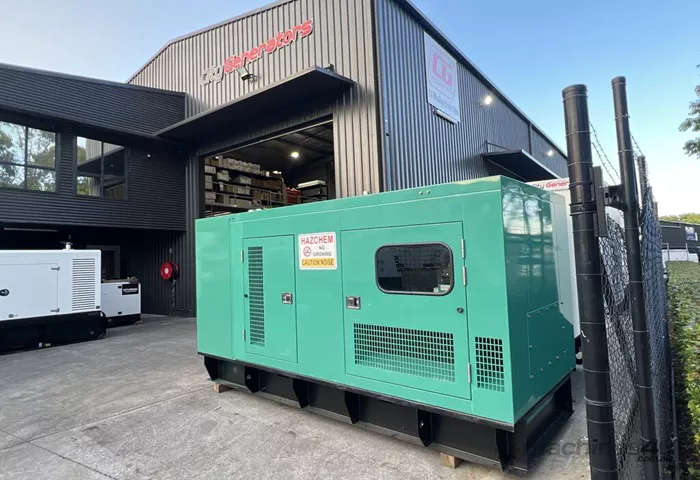When it comes to home generators, size matters. Choosing the right size generator ensures that your home stays powered during an outage without wasting energy or money. But how do you determine the perfect size for your needs? This guide will walk you through everything you need to know about sizing a home generator, from calculating wattage to understanding the different types of generators available.
Why Generator Size Matters
The Importance of Choosing the Right Size
Selecting the correct generator size is crucial for several reasons. A generator that’s too small won’t power all your essential appliances, while one that’s too large can be inefficient and costly. The right size ensures that your home runs smoothly during a power outage, providing peace of mind and security.
Risks of an Undersized Generator
An undersized generator can’t handle the load of your home’s electrical needs. This can lead to frequent tripping, damage to your appliances, and even generator failure. In extreme cases, it can cause safety hazards like electrical fires.
Drawbacks of an Oversized Generator
On the other hand, an oversized generator can be just as problematic. It consumes more fuel than necessary, increases maintenance costs, and may not run efficiently at lower loads. Finding the right balance is key.
How to Determine the Right Generator Size
Step 1: Calculate Your Home’s Total Wattage Needs
The first step in sizing a generator is to calculate the total wattage your home requires. This includes both starting (surge) wattage and running wattage for all the appliances and systems you want to power during an outage.
What is Starting Wattage?
Starting wattage, also known as surge wattage, is the extra power needed to start motor-driven appliances like refrigerators, air conditioners, or pumps. This wattage is typically 2-3 times higher than the running wattage.
What is Running Wattage?
Running wattage is the continuous power required to keep an appliance operating once it’s turned on. This is the baseline wattage you’ll need to maintain.
Step 2: Make a List of Essential Appliances
Create a list of the appliances and systems you want to power during an outage.
Common essentials include:
- Refrigerator
- Heating or cooling systems
- Lights
- Sump pump
- Microwave
- Television
- Internet router
Step 3: Check the Wattage Requirements
Check the owner’s manual or the label on each appliance to find its starting and running wattage. If this information isn’t available, you can use online wattage calculators or consult an electrician.
Step 4: Add Up the Wattage
Add up the running wattage of all the appliances you plan to run simultaneously. Then, identify the appliance with the highest starting wattage and add that to your total. This will give you the minimum wattage your generator needs to handle.
Step 5: Add a Buffer
It’s always a good idea to add a 10-20% buffer to your total wattage calculation to account for any unexpected power needs or future additions to your home.
Types of Generators and Their Sizes
Portable Generators
Portable generators are smaller and more affordable, making them a popular choice for powering a few essential appliances. They typically range from 1,000 to 10,000 watts.
Pros of Portable Generators
- Lower upfront cost
- Easy to move and store
- Ideal for short-term outages
Cons of Portable Generators
- Limited power output
- Requires manual setup
- Not suitable for whole-house power
Inverter Generators
Inverter generators are a type of portable generator that provides cleaner power, making them safe for sensitive electronics. They are usually smaller, ranging from 1,000 to 4,000 watts.
Pros of Inverter Generators
- Quiet operation
- Fuel-efficient
- Safe for electronics
Cons of Inverter Generators
- Higher cost per watt
- Limited power output
Standby Generators
Standby generators are permanently installed and automatically kick in during a power outage. They can power an entire home and range from 7,000 to 20,000 watts or more.
Pros of Standby Generators
- Whole-house power
- Automatic operation
- High reliability
Cons of Standby Generators
- Higher upfront and installation costs
- Requires professional installation
Factors That Affect Generator Size
Home Size and Layout
Larger homes with more rooms and appliances will require a higher wattage generator. Open floor plans may also affect how power is distributed.
Climate and Weather Conditions
If you live in an area with extreme temperatures, you’ll need a generator that can handle the additional load of heating or cooling systems.
Fuel Type
Generators run on different fuel types, including gasoline, propane, diesel, and natural gas. The fuel type can impact the generator’s efficiency and runtime, which may influence the size you choose.
Frequency of Power Outages
If you experience frequent or prolonged outages, you may need a larger generator with a higher capacity and longer runtime.
Common Mistakes to Avoid
Underestimating Wattage Needs
One of the most common mistakes is underestimating the total wattage required. Always double-check your calculations and include a buffer to avoid overloading your generator.
Ignoring Starting Wattage
Failing to account for starting wattage can lead to a generator that can’t handle the initial surge, causing it to trip or fail.
Overlooking Future Needs
Your power needs may change over time. Consider potential additions like new appliances, a home office, or an electric vehicle when sizing your generator.
Conclusion
Choosing the right size home generator is essential for ensuring your family’s comfort and safety during a power outage. By calculating your wattage needs, understanding the different types of generators, and considering factors like home size and climate, you can find the perfect generator for your home. Don’t forget to consult a professional if you’re unsure about your calculations or installation needs. With the right generator, you’ll be prepared for whatever Mother Nature throws your way.
Related topic:
- 5 Best Home Emergency Power Generators
- 5 Best Portable Gas Generators for Home Use
- 4 Best Non-Gas Generators for Home Use

